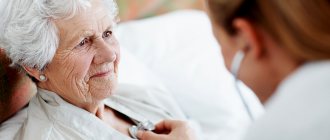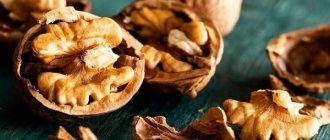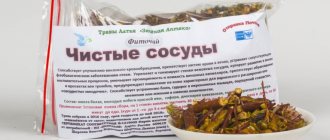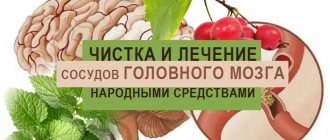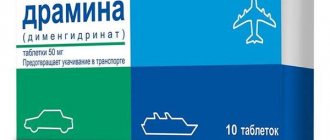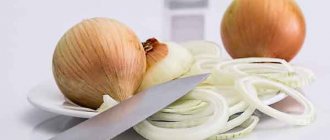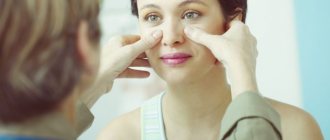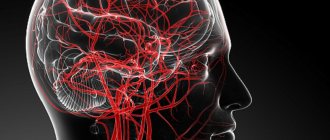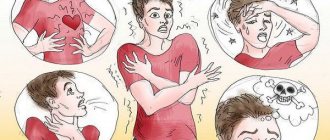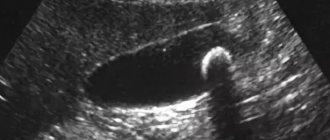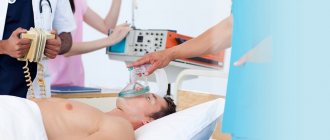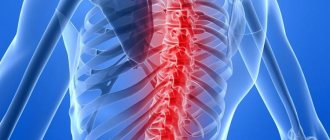Stroke prevention involves eliminating risk factors, drug therapy for underlying diseases, and performing exercises that strengthen the condition of the blood vessels in the brain. Doctors at the Yusupov Hospital take an individual approach to preventing vascular complications in each patient. In order to take into account all risk factors, neurologists and cardiologists carefully examine patients using modern devices produced by leading companies in Europe, Japan and the USA.
In order to avoid a stroke, you should know the causes that can cause acute cerebrovascular accident. The risk of stroke increases:
- age: after 50 years, every decade of life increases the likelihood of developing a stroke by 2 times;
- complicated heredity: the risk of stroke doubles if you have relatives who have suffered acute cerebrovascular accident;
- arrhythmia: 5% of patients suffering from cardiac arrhythmias develop ischemic stroke;
- narrowing or blockage of the carotid arteries and an increased tendency to form blood clots lead to stroke in 5-7% of patients;
- Arterial hypertension is one of the main causes of hemorrhagic stroke.
Patients who are at risk for the above parameters, after contacting the Yusupov Hospital, undergo an examination, which includes:
- ultrasound examination of large vessels (primarily the carotid arteries);
- electrocardiography;
- echocardiography;
- detailed blood tests to determine the lipid profile and susceptibility to thrombosis;
- determination of the level of homocysteine - an amino acid that leads to early atherosclerosis and the formation of blood clots. It increases the likelihood of stroke and heart attack by 5–8 times;
- computer and magnetic resonance therapy;
- duplex study of cerebral vessels;
- video electroencephalography;
- neuromyography;
- 24-hour Holter monitoring, arterial monitoring and ECG.
You can prevent a stroke by promptly consulting a doctor. Neurologists at the Yusupov Hospital examine a patient for a stroke if the following symptoms are present:
- sudden, temporary weakness or numbness of the limbs;
- short-term speech difficulties;
- periodic impairment of visual acuity;
- diplopia (double vision);
- imbalance or dizziness.
Primary prevention of stroke
Primary prevention of stroke is a system of measures aimed at preventing the first cardiovascular catastrophe. Doctors at the Yusupov Hospital recommend that patients use all methods of influencing areas of their lives that reduce the negative impact of traditional risk factors. The axiom is the formula: weight loss + quitting smoking nicotine + physical activity is more effective than medications. Lifestyle changes combined with regular, evidence-based preventive drug therapy can prevent stroke and add an additional 8-10 years to life.
What is a stroke
The essence of the disease is that the blood circulation in the brain is disrupted. There are two types of stroke: hemorrhagic and ischemic. The first is characterized by bleeding in the brain due to rupture of blood vessels. In the second option, only spasm or blockage of blood vessels occurs.
The most dangerous is the hemorrhagic form, after which the patient is left with serious health problems if the person was not provided with first aid in a timely manner. It is in the spring that the number of patients with this diagnosis increases. Ischemic stroke is caused by disturbances in basic circulatory functions.
We recommend
“Adaptation of older people: in modern society and boarding homes” More details
If disruptions occur in the well-functioning functioning of the circulatory system, then oxygen and nutrients stop flowing to organs and tissues. The brain also suffers and ischemia occurs. The most important thing is to prevent a stroke in time using various preventive measures.
Drug therapy
What medicine should I take to prevent a stroke? Cardiologists at the Yusupov Hospital carry out stroke prevention in patients suffering from diseases of the cardiovascular system in three areas:
- use of antihypertensive drugs;
- treatment with statins;
- antithrombotic therapy.
Antithrombotic therapy is the most effective. It has the following goal: preventing the formation of blood clots inside blood vessels and preventing stroke. In the clinical practice of cardiologists at the Yusupov Hospital, the following antithromboplatelet drugs are widely used:
- direct anticoagulants (heparin and its low molecular weight forms);
- anticoagulants - vitamin K antagonists (Warfarin is most often used);
- new oral anticoagulants (NOACs) – apixaban, dabigatran, rivaroxaban;
- platelet antiplatelet agents: acetylsalicylic acid, clopidogrel dipyridamole.
For the purpose of primary prevention of coronary embolic stroke in patients with atrial fibrillation, anticoagulants are used. If it is not possible to use them, acetylsalicylic acid is prescribed. This drug is recommended for patients suffering from coronary heart disease with clinical signs of obliterating atherosclerosis. If the patient has contraindications to acetylsalicylic acid, clopridogrel is used. Doctors at the Yusupov Hospital take an individual approach to the choice of antithromboplatelet therapy drugs for patients with a high risk of developing a stroke.
The risk of stroke is directly related to blood pressure levels. An increase in diastolic pressure of 7 mmHg is associated with a 42% increased risk of stroke. Blood pressure targets for low-risk patients are 140 and 90 mmHg. For people at high risk of developing a stroke (diabetes mellitus, previous cardiovascular diseases, chronic kidney diseases), cardiologists at the Yusupov Hospital achieve blood pressure levels below 130 and 80 mmHg.
Some patients with normal, slightly elevated or even low blood pressure need to take antihypertensive drugs if they have coronary heart disease or heart failure. For primary prevention of stroke, cardiologists prescribe the following medications:
- p-blockers;
- ACE inhibitors;
- calcium channel blockers;
- diuretics;
- angiotensin II receptor blockers.
There is currently no consensus as to which of these classes of drugs is more effective. As means of primary prevention, they all have approximately the same preventive potential, and the task of achieving target blood pressure figures comes to the fore. As first-line therapy, doctors at the Yusupov Hospital use thiazide and thiazide-like diuretics, as well as ACE inhibitors.
How to prevent stroke with folk remedies
Traditional medicine offers an extensive list of remedies in the fight against stroke, myocardial infarction and other cardiovascular diseases.
- Aloe arborescens (leaves ). The age of the plant used must be at least 3 years. Before using the plant for medicinal purposes, it is not watered for 5 days. You need to combine 375 g of crushed aloe leaves, 625 g of honey, 675 ml of red wine (preferably Cahors). Place the resulting mixture in a cool, dark place for 5 days. First take 1 tsp of the finished infusion. mixture 3 times a day 3 hours before meals for the first 5 days, then 1 tbsp. l. 3 times a day an hour before meals. Treatment lasts from 2 to 45 days.
- Elecampane tall ( root). 30 g of dry raw materials are mixed with 1 liter of vodka and infused for 40 days. Directions for use: 25 drops before meals. Infusion of elecampane is an effective remedy for sclerosis for older people.
- Stinging nettle (leaves). It is important that the plant is harvested in May. For 200 grams of leaves, take 0.5 liters of vodka, mix and pour into a bottle. A piece of gauze is wrapped around the neck, then placed on the windowsill for a day. On the second day, the composition is put away in a cool, dark place. The resulting infusion is taken 1 tsp. twice a day: once half an hour before meals, the second time before bed. This remedy helps improve heart function and reduce blood cholesterol levels.
- Rowan (fruit), oregano (herb) - 20 g each, rose hips - 60 g. A tablespoon of the resulting mixture should be combined with 1 glass of water, boiled, and then allowed to brew in a porcelain or enamel bowl. The finished composition is drunk like tea.
- Sarepta mustard. It is used for mustard plasters and mustard baths, which have a beneficial effect on the circulatory system and help prevent stroke.
- A decoction of rowan bark. 100 grams of bark are poured into 700 ml of boiling water; it must first be washed and crushed. Cook over low heat for 10–15 minutes. The finished broth must be strained and allowed to cool. The resulting product is taken 3 times a day, 4 tablespoons. Do not use if you have stomach diseases: ulcers, gastritis.
- A decoction of chamomile and immortelle. You need to combine 100 g of dried chamomile, immortelle and birch buds. Pour a mixture of dried herbs into 600 ml of boiling water and boil for 5 minutes. The resulting broth must be cooled. Directions for use: 3 times a day, 200 ml as tea.
- Monastery tea. You need to prepare 0.5 cups of dried rose hips, 1 tablespoon of crushed elecampane root, 1 g of dried rose hips and 1 g of leaf black tea, 2 tablespoons of St. John's wort and the same amount of oregano. First of all, take elecampane and rose hips, mix and cook over low heat in 5 liters of water for 2 hours. Then add the remaining ingredients and cook for another 60 minutes, then remove from the stove. The prepared decoction is consumed 3–5 times a day, half a glass instead of tea.
Now you know how to prevent cerebral stroke using folk remedies.
We recommend
“Boarding home for the elderly: how to place an elderly relative there” Read more
What medications to take
Your local doctor will give you a detailed recommendation on this matter. Typically, there is still a difference in treatment, depending on the form of the cerebrovascular accident suffered.
- Cause an increase in vascular tone: Cinnarizine, Cavinton.
- Vitamins C, group B, and Ascorutin strengthen cerebral circulation.
- The doctor must prescribe something from the group of drugs that increase the resistance of brain cells to oxygen deficiency (Aminalon, Cerebrolysin, Glycine forte).
All medications should be given to the patient in courses, take a break and repeat or change, depending on the doctor’s recommendation.
Pine cones
How to treat the consequences of a brain catastrophe using ordinary pine cones? Why are they so useful? According to scientists, they contain many vitamins and tannins that prevent the destruction of brain cells. The latter die due to disruption of normal blood flow.
Reference! The tannins contained in the buds make it so that four times fewer cells are destroyed.
Recipe 1: Rinse 5 medium-sized mature buds and add 200 ml of vodka. The decoction is infused for two weeks and then filtered. Next, it is recommended to add 1 teaspoon of the substance to tea once a day after meals.
Recipe 2: For those who do not drink alcohol, you can pour 500 ml of water into the buds, bring everything to a boil, and then simmer for 5-7 minutes over low heat. The dosage is 1⁄4 cup after meals at least four times a day.
Read more about the benefits of pine cones in this article.
What foods must be present in the diet?
Speaking about a healthy diet, it is necessary to note the mandatory inclusion of vegetables and fruits of different colors. Fortifying your diet with flavonoids (found in citrus fruits) has also been shown to reduce the risk of ischemic stroke.
Proteins of plant and animal origin are building materials. The daily diet should include meat and fish dishes. It is better to give preference to low-fat varieties and sea fish. To ensure your body gets protein, eat more nuts and legumes.
Plant foods also lower blood pressure and improve vascular elasticity. Add whole grains, brown unprocessed rice, and vegetable oils such as canola, olive, and flaxseed to your diet.
Dairy products should be consumed with a low percentage of fat, especially since many people are now diagnosed with lactose intolerance. If this is your case, and after consuming dairy products you feel discomfort, it is better to drink low-lactose milk or plant milk, or avoid it altogether.
Nutrition is an essential part of preventing stroke and dementia. Without a balanced diet and healthy foods, not a single pill will protect you from atherosclerosis. We are what we eat, don't forget that!
Hydrogen peroxide for stroke
| According to experts, this remedy has virtually no contraindications. Its use is impossible only in case of individual intolerance. Hydrogen peroxide can be used to treat many diseases, including stroke. Its beneficial properties in this case are determined by its ability to regulate metabolic processes in the body. Intravenous hydrogen peroxide is not used in traditional medicine. However, based on the results of clinical studies, it was found that if you manage to get an injection in time for a stroke, you can avoid many serious consequences. Hydrogen peroxide solution is used as a mouth rinse. Regularly performing this procedure can prevent strokes. In addition, rinsing is not only the prevention of serious illness, but also a way to cleanse the mouth of food debris. You will need hydrogen peroxide with a concentration of 3%, which should be diluted in water. The ratio is 1:1. You can rinse your mouth with this solution for a minute. |
Unsaturated fats
Nutrition for stroke prevention includes many foods that can provide the body with an adequate level of polyunsaturated fatty acids, which are instantly included in metabolic processes and are practically not stored in reserve.
The most important representatives of this class of compounds are complex high-molecular structures collectively called Omega-3. These fatty acids are not synthesized in the body, but take an active part in metabolism. Their deficiency often provokes a shift in the metabolic balance, which in most cases causes obesity.
Biochemists include the following compounds as Omega-3 acids:
- Linolenic acid (a lot in flax seeds).
- Eicosapentaenoic acid (a lot in red fish).
- Docosagescaenoic acid (high in olive oil).
The effect of Omega-3 on the human body has been studied by scientists over the past decades. As it turns out, these compounds can significantly lower blood cholesterol levels, which is one of the causes of high blood pressure.
The high price of red fish can scare off many people who want to improve their health. However, do not despair - Omega-3 is also found in ordinary herring, which nutritionists recommend consuming at least 2 times a week.
Vitamins after a stroke
Vitamins are necessary to strengthen the body weakened by disease.
List of vitamins necessary for a stroke patient:
- A. Stimulates the growth and regeneration of damaged tissues.
- B1 and B6. They help stabilize blood pressure, improve cerebral blood flow, and improve neuronal conductivity.
- C. Strengthens the vascular wall and accelerates the restoration of damaged vessels.
- B. Affects blood circulation and the functioning of the peripheral nervous system. Necessary for normalizing blood composition and restoring neural connections.
- E. prevents the appearance of free radicals that disrupt metabolism and cause cellular aging.
In addition to vitamins, to strengthen the defenses, minerals are prescribed: potassium, magnesium and others. Patients are recommended vitamin and mineral complexes. The list of drugs for recovery is large and often drugs produced by different pharmacological companies, despite the same composition, have different names. Before taking the purchased medication, you need to consult your doctor - an incorrect ratio of vitamins and minerals is unsafe for a stroke patient.
